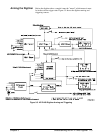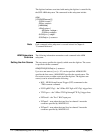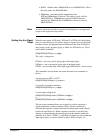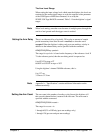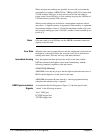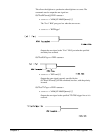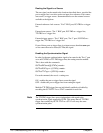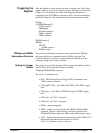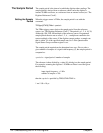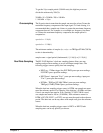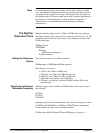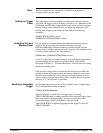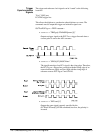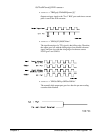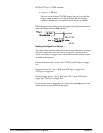
Triggering the
Digitizer
After the digitizer is armed it enters the wait-for-trigger state. Thus, when
trigger signals are received, the digitizer samples the inputs on its channels
(Figure 3-5). The hardware associated with triggering the digitizer is
controlled by the SCPI TRIGger subsystem, and by selected commands in
the SENSe subsystem. The commands used in those subsystems include:
TRIGger
[:STARt|SEQuence[1]]
:COUNt <
count
>
[:IMMediate]
:SOURce <
source
>
:TIMer1 <
period
>
:TIMer2 <
period
>
[SENSe[<
chan
>]]
:SWEep
:OFFSET
:POINts <
count
>
:POINts <
count
>
TRIGger and SENSe
Subsystems Overview
The following information summarizes each command in the TRIGger
subsystem and the two commands from the SENSe subsystem. The
Command Reference (Chapter 4) contains detailed information on the
parameter settings and on reset conditions.
Setting the Trigger
Source
The trigger source specifies the signal which triggers the digitizer to take a
reading. The source is specified with the command:
TRIGger[:STARt]:SOURce <
source
>
The <source > parameters are:
• BUS - HP-IB Group Execute Trigger (GET) commmand or the
*TRG common command.
• ECLTrg0/ECLTrg1 - the VXIbus ECLTRG0 or ECLTRG1 trigger
lines.
• TTLTrg<n > - the VXIbus TTLTRG0 through TTLTRG7 trigger
lines.
• EXTernal1 - the "Ext 1" input port.
• EXTernal2 - the "Ext 2" input port.
• HOLD - suspend triggering.
• TIMer - sample rate is specified by the TRIGger:STARt:TIMer1
command. The rate is derived from a reference specified by the
SENSe:ROSCillator subsystem. TIMer is the default trigger source.
• VME - sample and/or transfer data from memory to the VME (VXI
data transfer) bus when the data register at offset 12
( 0C
16
) in A24 address space is accessed.
Chapter 3 Understandin
g
the HP E1429 Di
g
itizer 121



